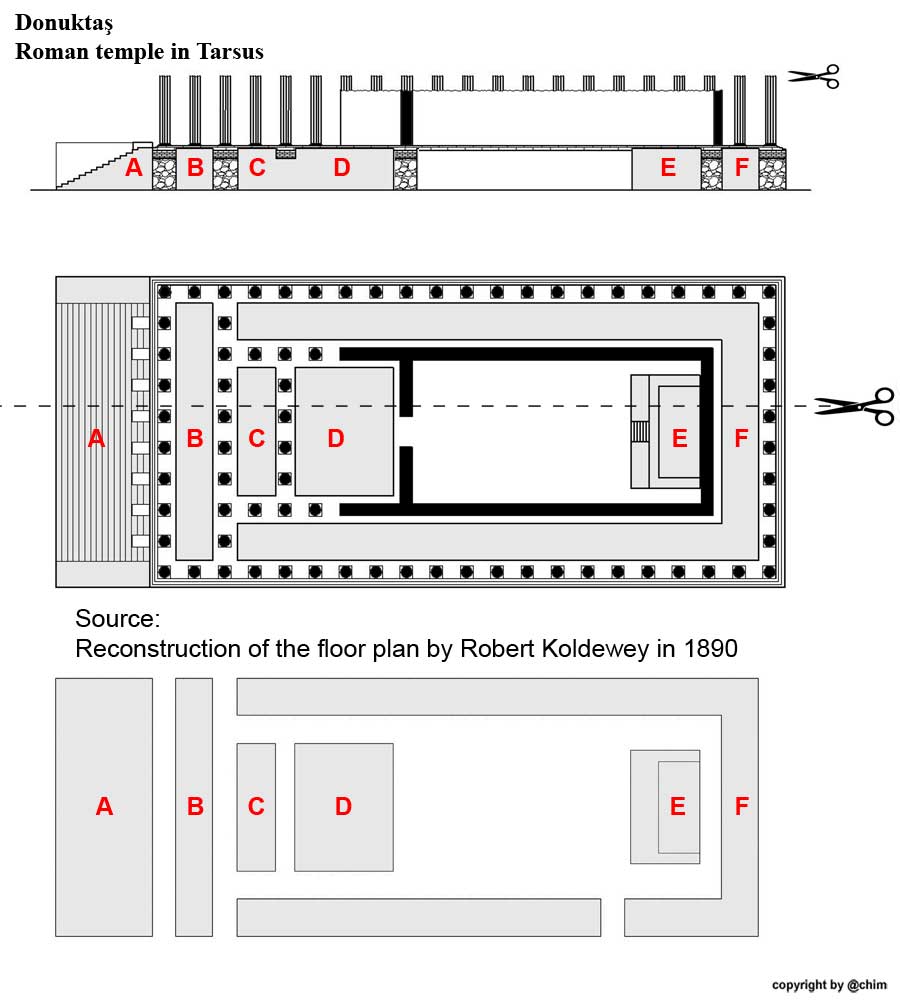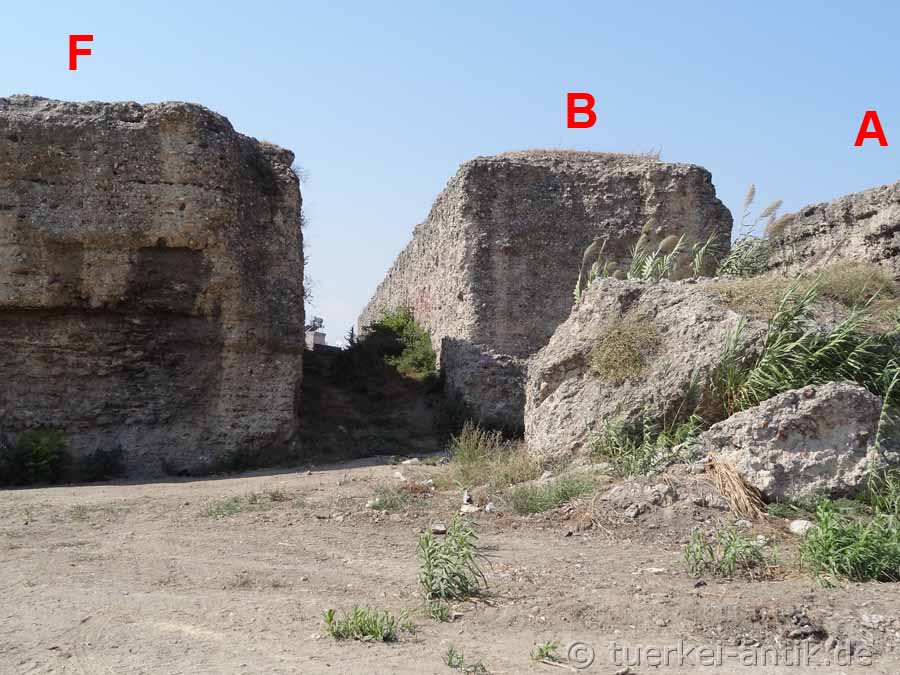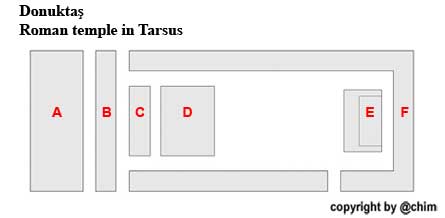 |
|
Ancient temples in Turkey Tarsus |
||||||||||||||||||||
|
|
|
|||||||||||||||||||
| The south side | ||||||||||||||||||||
|
||||||||||||||||||||
|
The locals call the temple "Donuktaş > frozen stone" or "Dönükta > turned stone". |
||||||||||||||||||||
|
|
||||||||||||||||||||
| The east side | ||||||||||||||||||||
|
The impressive building in the Tekke district is 115 metres long and 45 metres wide.
The outer walls are up to 6.60 meters thick and are made of Roman concrete, as tests at the Archaeological Faculty of the University of Istanbul have proven. |
||||||||||||||||||||
|
|
||||||||||||||||||||
| Today's access to the interior | ||||||||||||||||||||
|
Other old sources saw in the building a huge tomb, again others a princely seat. The Dutch consul William Burckhardt wrote about Donuktaş after his long stay in Tarsus in 1835: "It is the family mausoleum of a king". For centuries, the building was used as a quarry by the city's inhabitants until only the remains that are still visible today remained. To get inside, an entrance was broken through the concrete on the west side. |
||||||||||||||||||||
|
|
||||||||||||||||||||
| View into the interior | ||||||||||||||||||||
|
|
||||||||||||||||||||
| The west side | ||||||||||||||||||||
|
There are no exact dates of construction. Prof. Dr. Nezahat Baydur of the Museum Tarsus, who led excavations in the temple in the years 1985-1992, dates the beginning of construction of the temple to the time of the Antonine dynasty of Roman emperors, i.e. to the time of the emperors Nerva until Commodus. (96 - 192 A.D.) |
||||||||||||||||||||
 |
||||||||||||||||||||
|
Robert Koldewey, a German architect and building researcher had documented quite conclusively in 1890 after investigations at the ruin that it is a (probably) Roman temple building with 10 columns on the narrow sides, which the latest excavations basically confirm. |
||||||||||||||||||||
 |
||||||||||||||||||||
|
|
||||||||||||||||||||
|
|
||||||||||||||||||||
| The interspace between the parts F+C (left) and B | ||||||||||||||||||||
| Photos: @chim | ||||||||||||||||||||
| Translation aid: www.DeepL.com/Translator | ||||||||||||||||||||
| Source: Wikipedia and others | ||||||||||||||||||||
|
|


